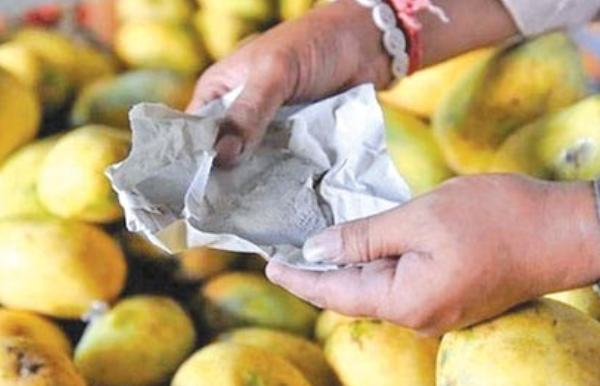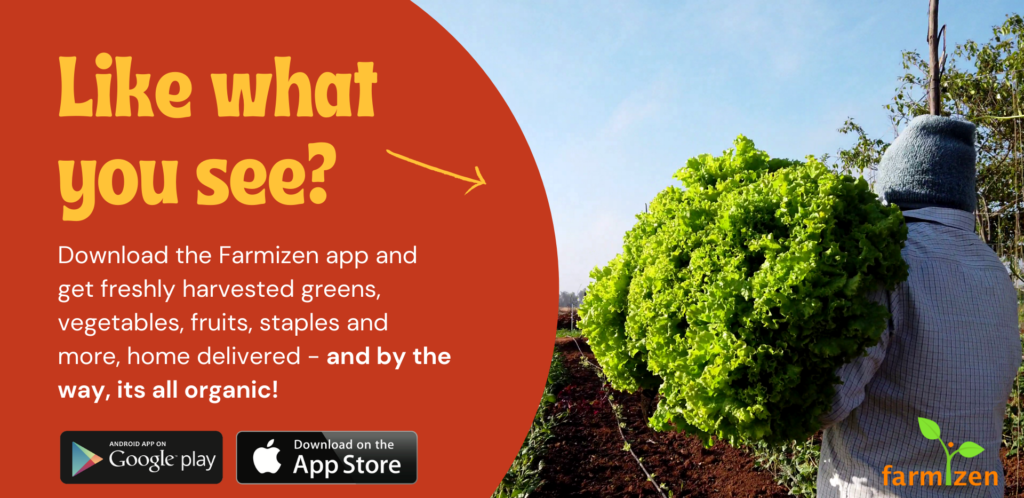The joy of biting down on a perfectly ripened sweet fruit is one of the simple joys of life.
But finding that perfectly ripened fruit is not easy. We may thump, press, roll, smell and then choose the fruit on carts and supermarket shelves but once you take a bite you will realize its bland or raw inside. These could be artificially ripened, have had a long cold storage chain or could have been in a store chain for a long time. But what about fruit from Farmizen, Which you have bought directly from farmers, why are they not ripening naturally, to understand this let’s delve deeper into the world of fruit ripening
Why do fruit need to ripen, why don’t trees produce fruit that are sweet to begin with on day one. To answer this we will need to know what’s the point of the existence of fruit in the first place. Trees as we know can’t move unlike the Ents from Lord of the Rings. Trees are mean parents for the most part, If the seed just falls under the parent tree and grows it will cramp their style and also not get sunlight and other nutrients to grow. So trees cleverly came up with a way to convince mammals and birds to do their bidding by covering the seeds in edible stuff. If the flesh of fruit is sweet from the beginning chances are the bird or mammal will pluck and eat fruit long before the inside seed is mature enough. So until the seed inside is not fully formed the flesh of fruit is an unpalatable tough, sour, bland even filled with latex in some cases. Once the seed is ready the fruit is pumped with natural plant hormones that convert the complex carbs to simple sugars, emits sweets fragrance, change to brighter color which are irresistible to animals which eat the fruit, the seed is dumped unceremoniously from the other end far from the tree.
All fruit based on how they can ripen can be classified into climacteric and non-climacteric fruits.
Climacteric fruits continue to ripen after being harvested; some examples being apples, bananas, and melons. They don’t need to be attached to their trees, they can ripen cordlessly on your table. Than there a non-climacteric fruit, like grapes, strawberries, and pineapple, does not continue ripening once picked. Once they are harvested the ripening process stops, They must be harvested at the perfect time and once harvested they need to be consumed.
Fruit ripening not just converts the complex carbohydrates to simple sweeter sugars, a lot of other things change too, making the fruit more nutritious, for example in apples and pears, the ripening process creates colorless products that are highly active antioxidants. As some fruit ripen they change color to deep reds, blues, and purples which is due to anthocyanins these anti-inflammatory pigments help protect brain function and protect against CVD and cancer.
Todays fruits are bred specifically for the edible portions we eat rather than for seeds, if you take the example of mangos, wild mangoes have a rather thin layer of flesh covering the large seed, enough to entice a primate to eat it and help in dispersal but not worth the effort of humans to harvest it. So we have bred trees which give larger fruits with more edible flesh. With larger edible fruit came ripening issues but we have figured out ways to overcome this using various methods. The crux of fruit ripening is Ethylene and once you figure out how to control it, you can hasten or delay ripening
So how are fruits ripened on a commercial scale
Natural Ripening : The safest method would be to keep the fruit in an enclosed space so that natural ethylene concentrations rise over time, in few cases this also involves raising the temperature, or increasing oxygen concentration of the ripening chamber to increase respiration of fruit. This would give the most naturally and uniformly ripened fruit, but would take time and as the flesh inside is also ripened, so the fruits won’t take very kindly to shipping and will need to sold off as soon as possible
Using Ethylene Gas : Some wholesalers use artificial ethylene gas or pouches containing absorbent material impregnated with ethylene, this will just ripen the skin and maybe the outer layer, but inner layer will still remain bland, these fruit will ship well and also look attractive to the buyers but the taste will be bland and flavorless. Although the fruit ripened this way are inferior in taste and flavor there is no actual harm to health here.
Calcium Carbide : The most widely used method which keeps coming up in news every so often is the use of Calcium Carbide for ripening. Although it has been banned from many years, it is still freely available as it’s used in gas welding torches. Calcium Carbide is greyish-white to black in color with garlic like odor. When it reacts with water, it produces acetylene gas (popularly referred to as carbide gas) which is an analogue to ethylene and quickens the ripening process. However, acetylene is not nearly as effective for ripening as is ethylene and acetylene is not a natural hormone as ethylene. Only the skin of the fruit changes color here making it attractive but the inside remains raw and tasteless.
The real harm with Calcium Carbide is that it contains traces of arsenic and phosphorus hydride which the fruit gets coated with. Then why is this carcinogenic chemical is used so indiscriminately despite being banned? The answer is price! It’s several hundred times cheaper than ethylene. And being highly reactive it leaves the skin of the fruit a uniform ripened color but leaves the insides pretty much raw.
Consumption of fruits ripened with Calcium Carbide causes stomach upset because the alkaline substance is an irritant that erodes the mucosal tissues in the stomach and disrupts intestinal functions.

At Farmizen farmers send us fruit harvested at an optimal size in the raw to semi ripe stage so that they do not get damaged while shipping. Once you receive it you can use any of the following tips and tricks to ripen them naturally, it will take 2-3 days of time but these are much better than the toxic fruit available commercially
1) Just add your fruit into a paper bag, or the carton it came in, seal it, and wait a few days!. Natural ethylene given off by fruit will build up in the enclosed space that helps in ripening.
2) If the fruits are too raw and you want to hasten the ripening process further you can add a ripe Banana or ripe tomato to the bag and seal it. These fruits are a good source of natural ethylene and will ripen the raw fruit very quickly
3) Storing in flour, hay or Rice : You can cover fruit with flour, hay or rice. The mechanism here is same as using a paper bag, the concentration of ethylene is raised, but the materials used being absorbent absorb any moisture released during the ripening process thereby preventing mold.
Sometimes despite these methods, your fruit may still not ripen. We do our best to only send out produce that we’re confident is on it’s way to ripeness, but sometimes immature pieces may get through. Also sudden dips in temperature plays spoilsport with the natural ripening process . In these cases do reach out to us.


Comment